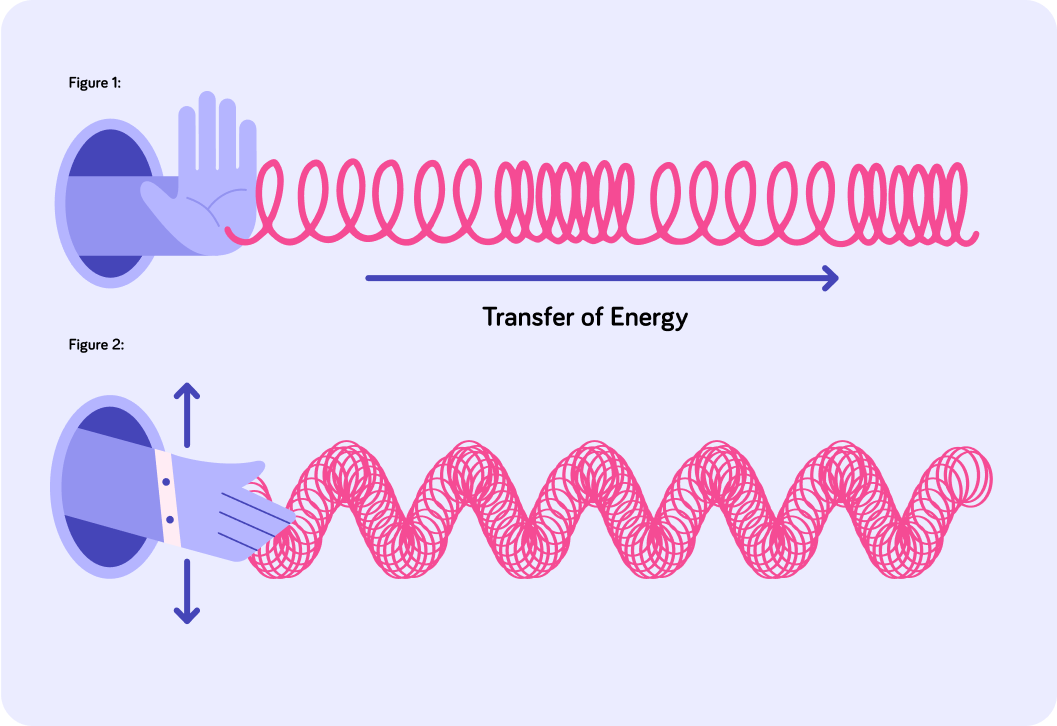YOU ARE LEARNING:
Transverse and Longitudinal Waves

Transverse and Longitudinal Waves
Waves can either be transverse of longitdinal depending on whether their oscillations are perpendicular or parallel to the direction of energy transfer.
In this lesson we will look at mechanical waves, and how they can be split into transverse waves and longitudinal waves
Look at figure 1. In what direction are the coils of the slinky vibrating? Answer either up and down or left and right.


Now look at figure 2. In what direction are the coils of the slinky vibrating? Answer either up and down or left and right.


In what direction is the wave travelling in both figures? Answer either horizontally or vertically.


Think about a water wave and the motion of a floating ball. What is the motion of the ball in relation to the wave?

A water wave is an example of a transverse wave. What do you think the definition of a transverse wave might be?

Consider this sound wave. Notice that there are areas of compression and rarefaction. In what direction are the particles oscillating? Answer either perpendicular or parallel (to the speaker).


Is this sound wave an example of a transverse or longitudinal wave?


A sound wave vibrates the particles of air in a room. There are areas where the air particles move closer together. What is this called?

A sound wave is an example of a longitudinal wave. Can you guess the definition of this?

Consider figure 1: Is this an example of a longitudinal or transverse wave?


Consider figure 2: Is this an example of a longitudinal or transverse wave?


Consider a longitudinal wave in a slinky. What are the points where the slinky is more stretched out called?

To sum up:
- A transverse wave has vibrations that move perpendicularly to the direction of travel of the wave (the transfer of energy).
- A longitudinal wave has vibrations that move parallel to the direction of travel of the wave (the transfer of energy).
